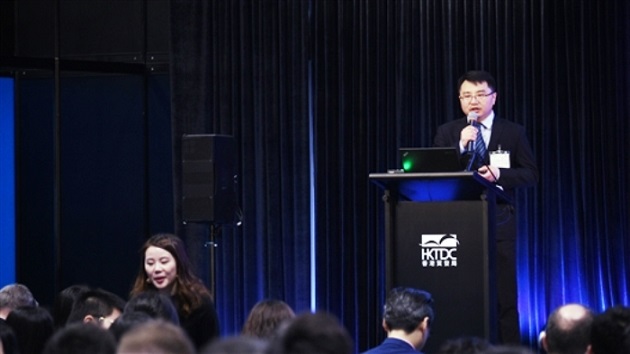Lighting industry innovators discussed the recent history, latest innovations, and present and future trends in the global smart lighting market in the Innovation in Smart Lighting Forum on the first day of the HKTDC Hong Kong International Lighting Fair (Spring Edition).
The market outlook from the supply-side perspective is pessimistic because of an overheated market, according to Figo Wang, Chief Research Analyst and Research Director at LEDinside, TrendForce Corp. But the commoditised MOCVD market in China is a game changer, he said, because of much lower costs and much faster delivery times from Chinese producers, which are slashing the earnings and market share of the traditional big players, but providing users with great opportunities.
On the demand side, the LED market was maturing, he explained. The lighting segment was the largest market for the LED industry, but the growth rate of this segment is insignificant. The micro and mini LED segments are growing, but they are facing a supply shortage.
TrendForce’s analysis of Chinese lighting and luminaire exports shows that they have been falling since 2015 because of the strong RMB and US tariffs – since the US is a US$8 billion market. Exports to the US shot up in October and November because of the tariff uncertainty, but have fallen in recent months, he said.
Lighting Evolution
Lighting and mobile phones share an analogous evolution, explained Tjaco Middel, Head of R&D for Asia Pacific of Austrian company Tridonic, a leading global provider of smart and efficient lighting solutions. The original mobile phone was designed to do only two things – phone and text – but since it became connected to the internet, almost anything is possible. Similarly, lighting provides a basic function, but when connected to the internet, the possibilities are endless. Just three years ago, the focus of LED lighting changed from just LEDs and energy savings to controls, explained Middel, because controls allow new business opportunities, such as smart lighting and more beautiful buildings. Now the mobile phone can be used to control light, but this just makes it a remote-control device. “It must be connected to the internet to be great,” he said.
Tridonic’s DALI standard is the most common way of connecting lighting to the internet in Europe. But controls are also needed to connect lighting to the net, he explained. The lighting in a building must be connected at every light point for intelligent lighting control. Middel reviewed some of the myriad benefits of connected lighting:
* Connected lighting can provide an energy dashboard, monitoring energy use in the building. In the future, it will be difficult to comply with green building certification requirements without intelligent lighting.
* Intelligent lighting can provide occupancy reports, allowing store management to identify high-traffic spots to put high-profit products there. It can allow building management to optimise building usability and occupancy. And it can even allow companies to use parking spaces more efficiently by integrating shared spots into the lighting system, allowing the company to make money from underused parking spaces or get more space for employees.
* Connected lighting allows remote commissioning. Since 80% of a building’s costs are operational, remotely commissioning lighting can reduce operational costs.
* With intelligent lighting, the software systems can be updated, future-proofing the lighting system. “If the software can be updated, the luminaires will last much longer,” he said.
Bluetooth innovation
Bluetooth SIG is a global community of over 30,000 companies with the common goal of driving innovation in the vast and growing range of connected devices, including luminaires, through common technical standards, explained Kai Ren, Developer Relations Manager, APAC, Bluetooth SIG. Its three main responsibilities are to expand the capabilities of Bluetooth technology by creating new and improved specifications; establish qualifications to drive Bluetooth interoperability; and promote and develop the Bluetooth brand globally.
One of the main reasons for Bluetooth’s global popularity, said Ren, is that it provides developers with complete wireless connectivity solutions. Some examples include:
* Audio streaming through point-to-point network topology, for wireless headsets, speakers and in-car infotainment;
* Optimised, very low-power data transfer, using point-to-point topology, which is commonly used in sports and fitness tracking devices, and health and wellness devices;
* Location services, including proximity solutions for point-of-interest information, navigation, and indoor positioning systems used for wayfinding where there is no access to GPS, such as in a subway train station; and
* Device networks for control, monitoring and automation systems, where many devices need to communicate with one another.
For more information, visit: www.hktdc.com/aboutus








